Here are two pictures of young and promising researchers. Both are inspecting cells under the microscope. Can you spot 5 differences?
2. Head cover?
3. Microscope?
4. Lab coat?
5. ?
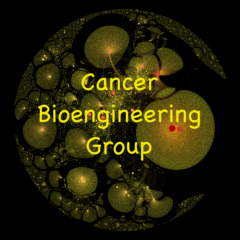
Blog about neuroblastoma research
My WordPress Blog is about neuroblastoma biology and Cancer Bioengineering Group
Here are two pictures of young and promising researchers. Both are inspecting cells under the microscope. Can you spot 5 differences?

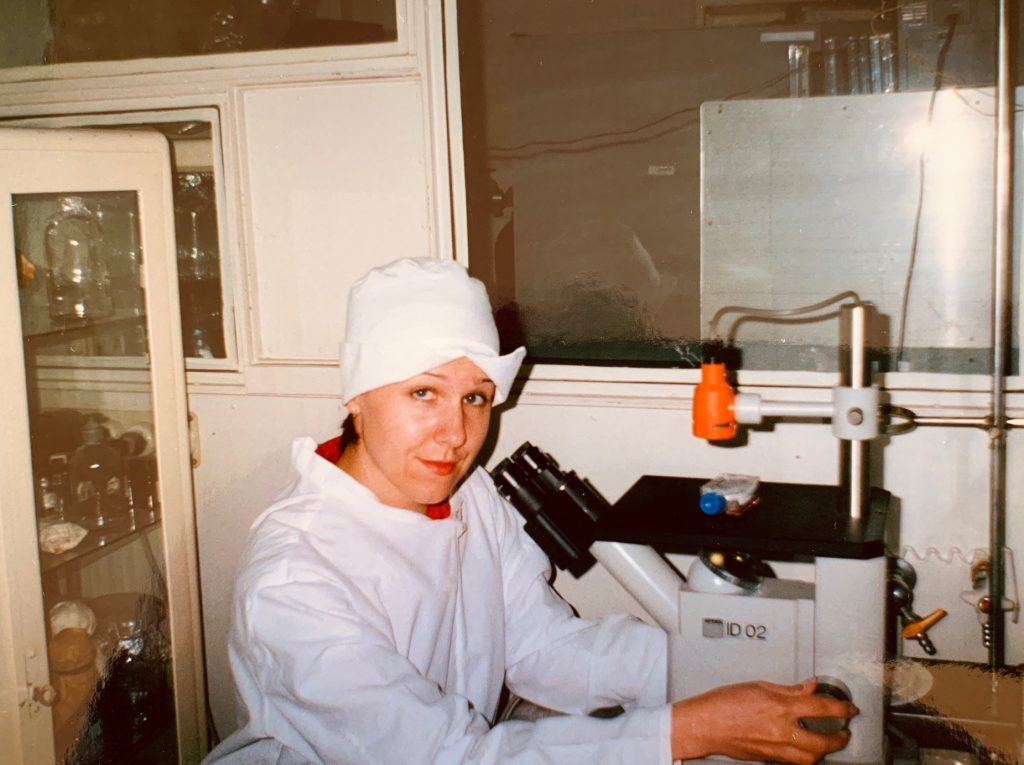
What a great start for 2020! Our long-lasting and productive collaboration with our colleagues from Tissue-Engineering Research Group Brough to live an important overview of the preclinical models for neuroblastoma. We particularly focused on the 3D in vitro models available.
During this exercise of searching and reading research papers, we found that researchers in neuroblastoma are looking for alternatives of traditional 2D culture. It is may be slow at the moment but the interest is there.
3D neuroblastoma models worked well in both validating known chemotherapies and screening new. The concepts and materials that were initially developed for bone or tissue regeneration can be used to a miniature model of neuroblastoma.
3D tissue-engineered models can accelerate drug discovery and development, reducing the use of animals in preclinical studies.
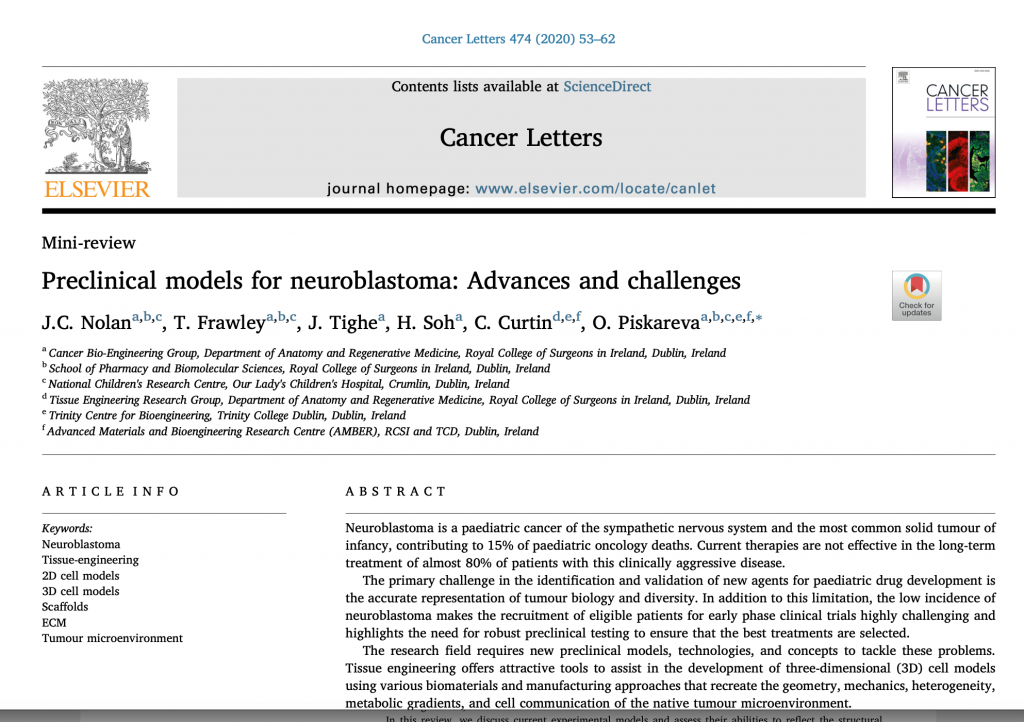
Here we go. Our first attempt to bio print neuroblastoma cells using Rastrum technology.
A compact pink oven-like device with a user-friendly interface and ‘magical’ disperse of cells and 3D environments. We bioprinted two types of neuroblastoma cells. One-easily forming clusters or tight groups and the
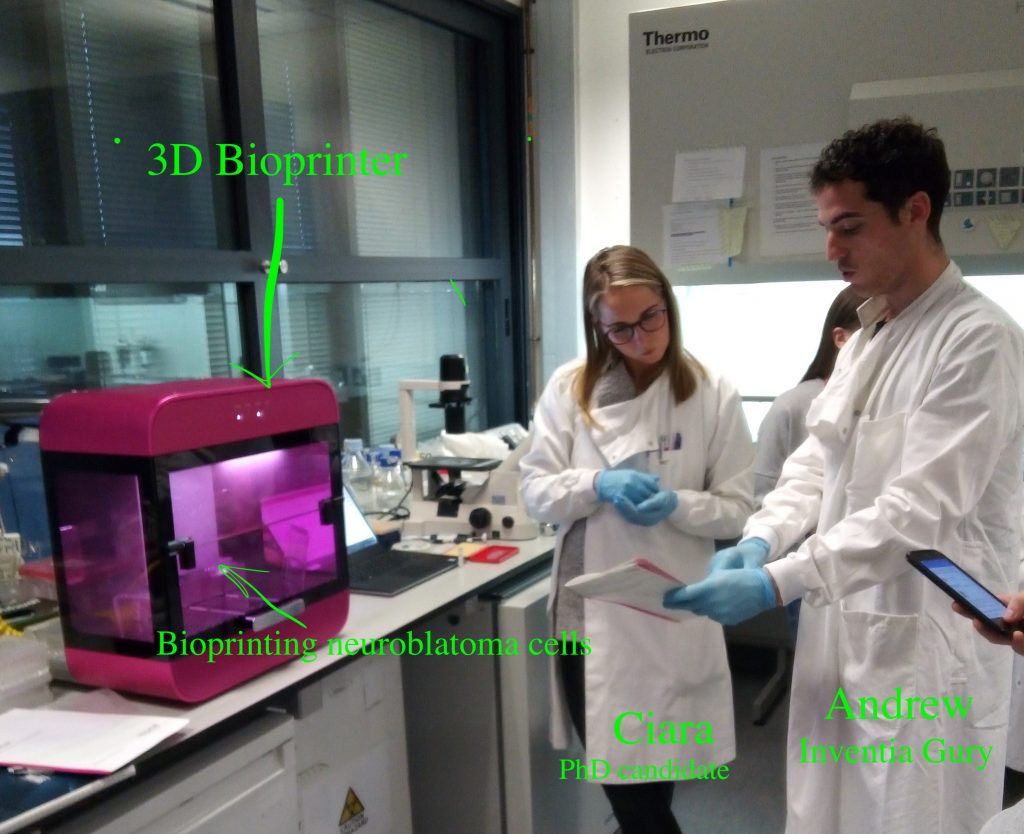
It was the end of July when Ciara suggested doing ‘Hell and Back‘ for Childhood Cancer Awareness Month. It sounded challenging and new for me so I supported this idea. We branded ourselves as #Lysis2Kill connecting to our biological background and crafted our very own T-shirts.
I was glad that I did not search for much about this challenge… I hoped that my current fitness level would suffice to complete it. Maybe coming even in the last wave…
It was on sunny Sunday. The day was fantastic. A few clouds in the sky. Many people came and did similar stuff – fundraising for the charity of their choice. Some did it for their own satisfaction or just for fun.
The atmosphere was buzzing. Throughout the challenge, people helped others they didn’t even know. Everyone cheered and smiled back. The team spirit was just fantastic.
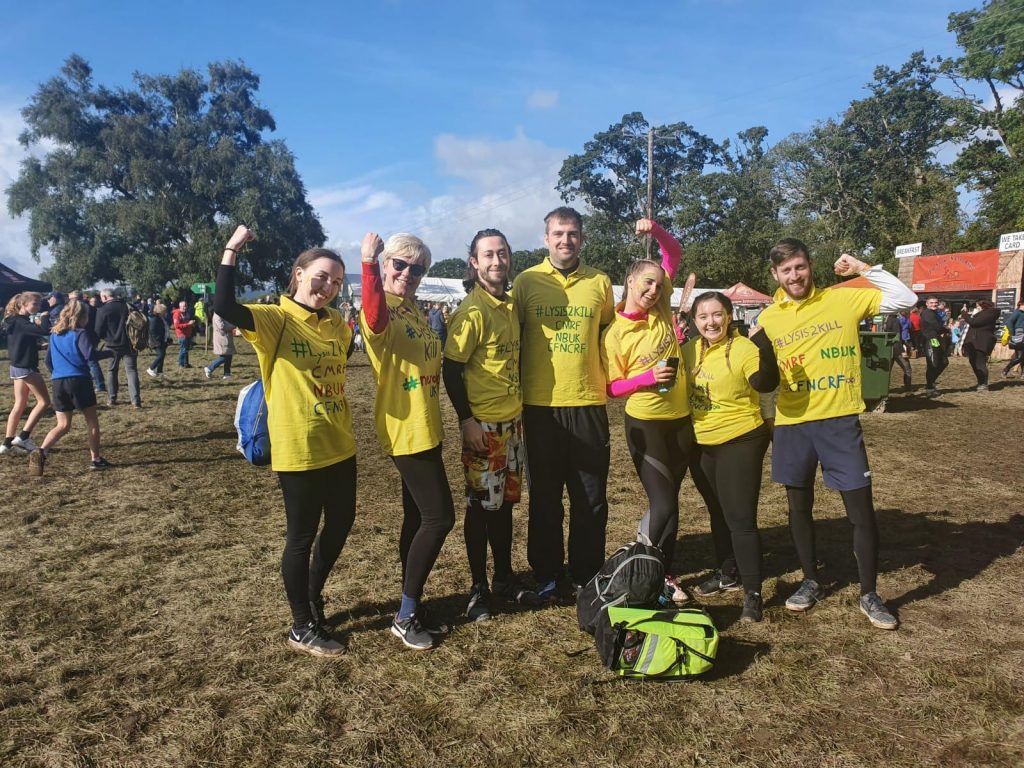
We ran, crawled, climbed, walked & swam. There were moments when I prompted myself to think only about great and picturesque surroundings. We ended up battered and bruised. It was tough and our bodies were recovering for a good while after… However, saying that I loved every minute of it. It was an exceptional experience.
#Lysis2Kill completed the Hell&Back challenge dedicated to raising awareness to Childhood Cancer and Childhood Cancer Research Charities that work hard and dream big. Some of them are established and run by parents who lost their child to neuroblastoma. Thanks to our supporters, we raised 1.7K to support three wonderful charities.
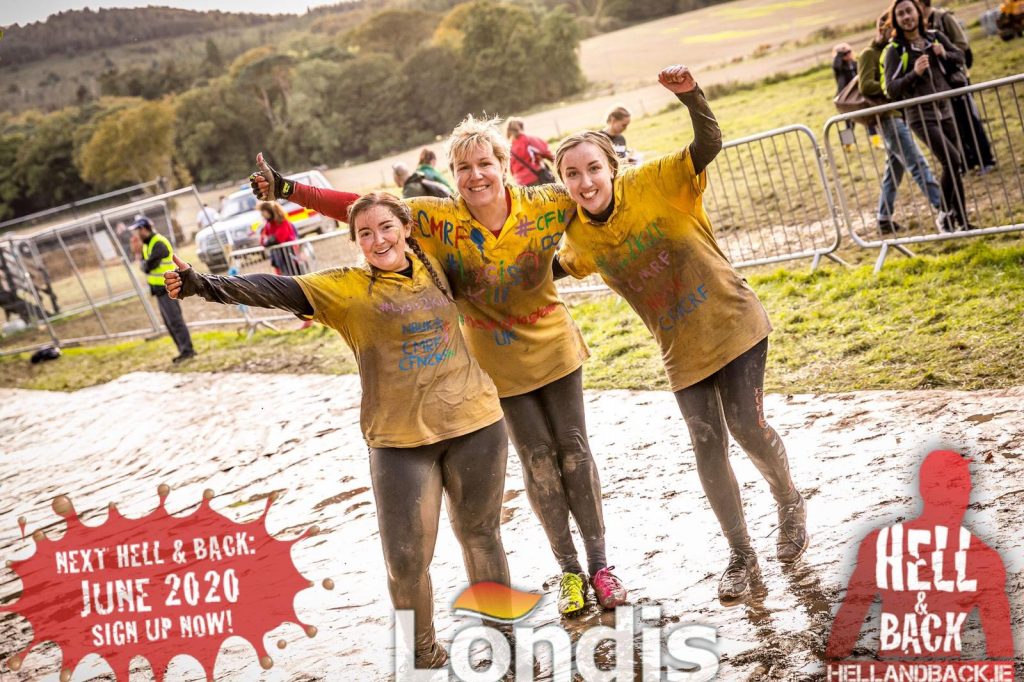
We put together these funds and the Waffle Baking Morning money which gave as final 2.1K Euros. We equally divided the pot between Children’s Medical Research Foundation, Neuroblastoma UK and the Conor Foley Neuroblastoma Cancer Research Foundation.
MANY THANKS FOR YOUR BIG HEARTS!!!
Now, when my team has expanded, it is so easy to come up with fundraising ideas and then develop one in a well-rounded event. In February, we ran Hot Chocolate Morning to raise awareness in childhood cancer and celebrate the International Childhood Cancer Awareness Day. We have an entire month of September to make this disease visible. It was the first time for some of my team members.
“Last Friday, I got to take part in my first fundraising event at the Royal College of Surgeons in Ireland. Our team hosted a waffle morning for #childhoodcancerawarenessmonth and we are delighted to have raised €403.85 thanks to everyone’s generous donations! Our fundraising does not stop here, in just a few weeks time all 7 of us will be taking on the 8km Hell and Back challenge to raise more awareness and funds for our four chosen charities: CMRF Crumlin, Neuroblastoma UK, and the Conor Foley Neuroblastoma Cancer Research Foundation. We hope everyone enjoyed their little Friday treat!” Catherine Murphy, PhD student funded by Neuroblastoma UK
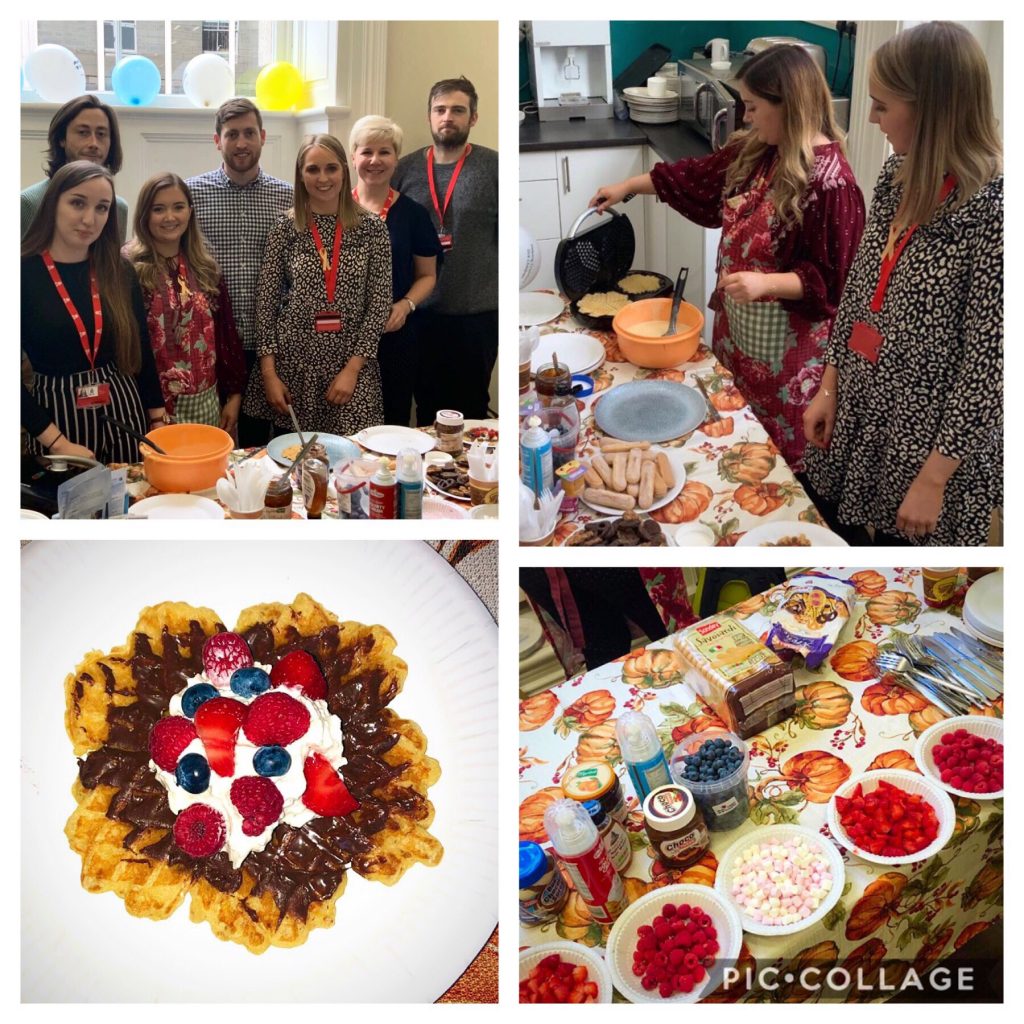
I have started a new chapter in my research career by joining the Department of Anatomy and Regenerative Medicine as a StAR Research Lecturer. By a coincidence, it has happened on the first day of Childhood Cancer Awareness Month. It might be symbolic.
The new start requires fresh ideas. Now, the new chapter is called Cancer Bioengineering Group. Exciting times ahead!
This Friday the 13th of September the Cancer-Bioengineering research group will be hosting a ‘Waffle Morning’ in honour of Childhood Cancer Awareness Month.
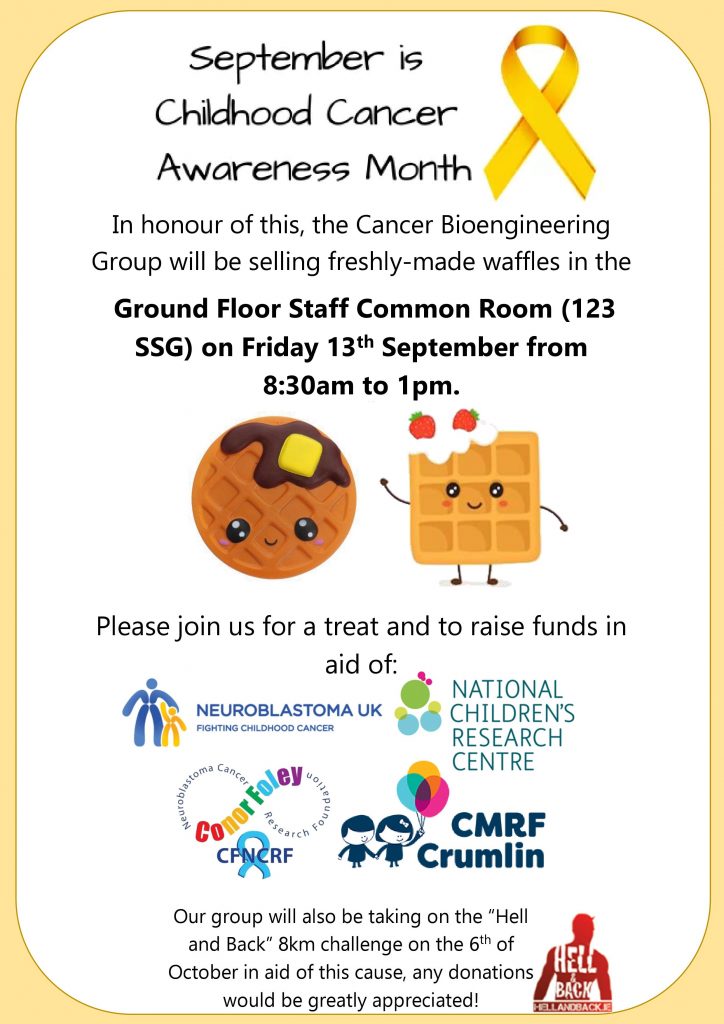
Pop
We promise to bake 3D waffle engineered scaffolds and populate them with marshmallows, berries, cream and Nutella!
We celebrate Childhood Cancer Awareness Month every September. This is our chance to talk about this cancer, the patients and their families and what can be done to make a change.
Together with Prof Richard
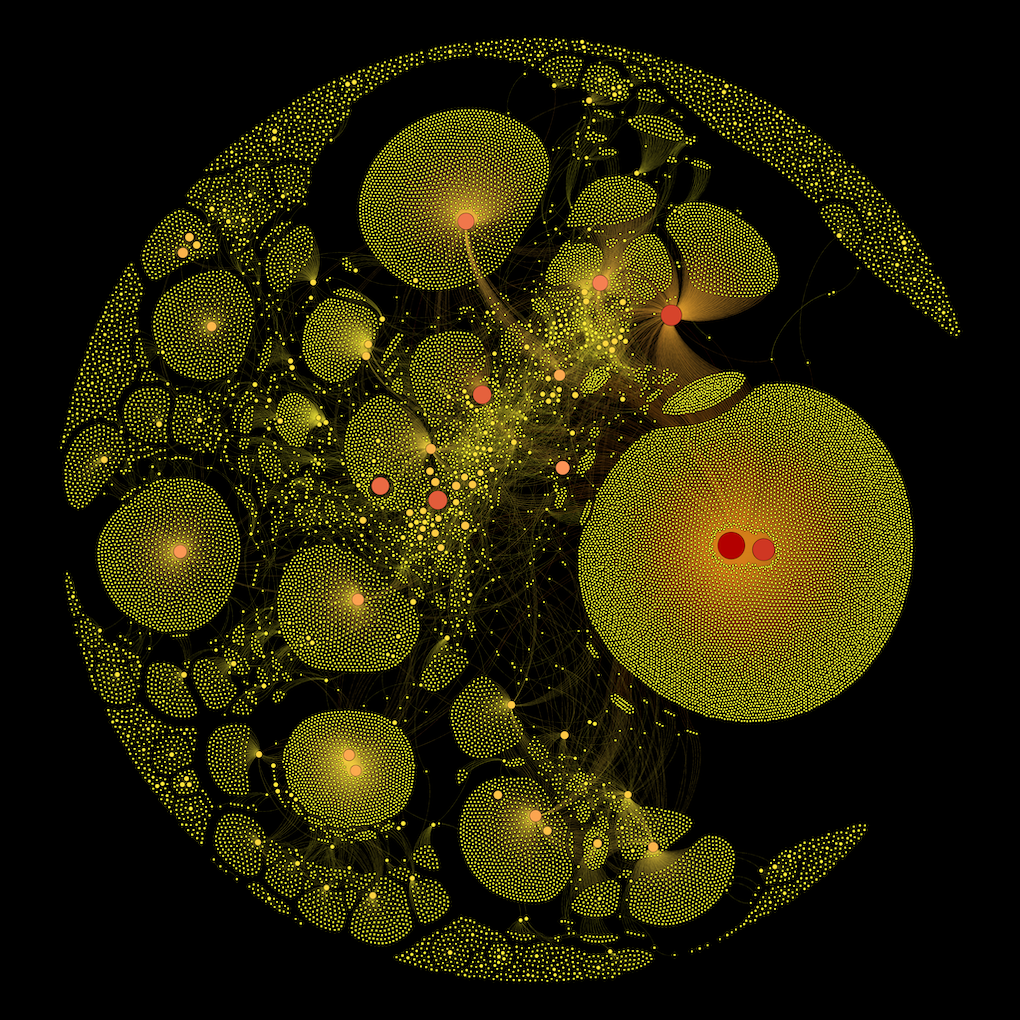
Yellow dotes represent tweets. The intensity of yellow reflects the number of tweets per account. Many of them formed isolated communities with no connections. A few reach out. And this is very sad, it means that these communities do not interact with each other.
Communities have to come together then they will be heard. The Childhood Cancer Awareness months is a great opportunity to do it.
Each student is different. The best way to learn something is to experience it. Two months is a very short span as some experiments run for 3-6 months. But it gives a good taste on what research actually is. How different it is from CSI or Criminal Minds.
“Over the past two months, I had the privilege to work under my PI, Dr. Olga Piskareva and supervisor, Dr. John Nolan in the cancer genetics lab as a summer research student. My project was about gene expression of apoptotic genes as well as detecting apoptosis via flow cytometry in melanoma cell lines treated with chemotherapy agents and microRNAs. I had previous experiences in other research labs, but I have never learnt as much as I did in a span of two months! After this experience, I gained a better understanding of how cancer cells behave in different environments and also learnt to appreciate the difficulty of running a good experiment. Ever since my grandmother passed away due to cancer, I vowed to become a cancer researcher. This summer I have achieved this dream and hopefully continue to pursue my career as a physician-scientist!” Martin Liu
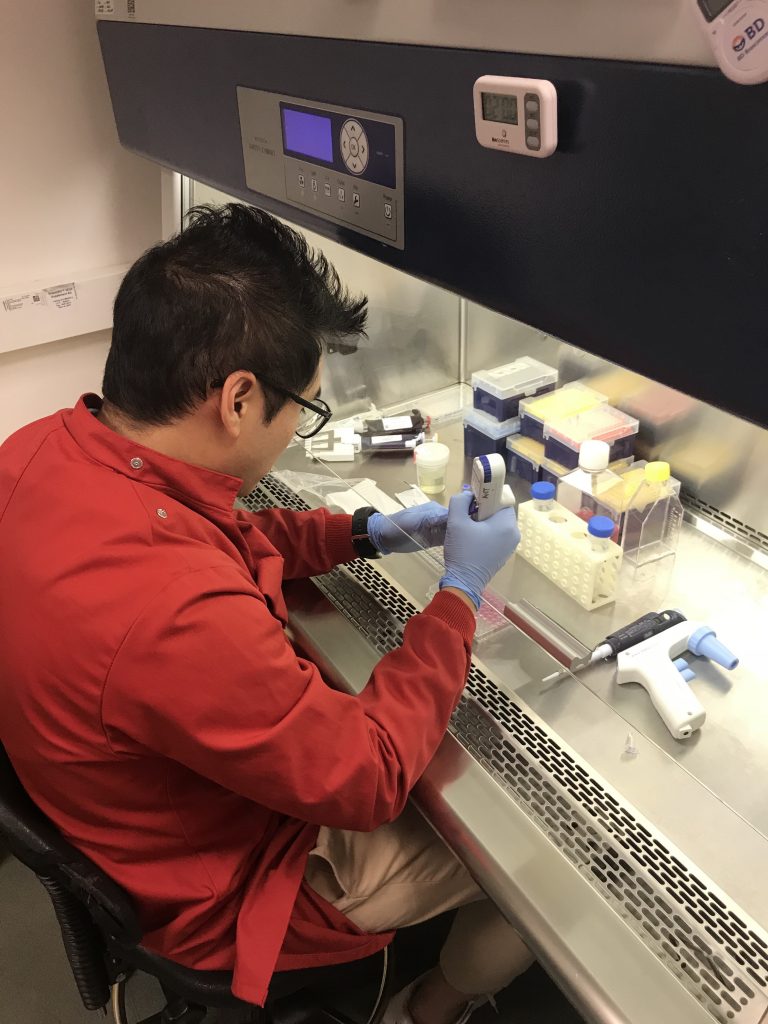
Last Friday we said Good Bye to 3 medical students who joined us to gain research experience. It has been quiet in the lab since they finished! It is always interesting to see their evolving journey as researchers.
“This research opportunity has given me the most exciting and rewarding experience during my undergraduate Medicine course. I got hands-on experience in ongoing medical research in Cancer biology which I think is unique of its kind for any undergraduate medical student. Throughout this journey, I could interact with many people coming from different domains including my collogues and my supervisor which giving me the opportunity to form professional relationships. I feel that my medical background helped me a lot along with my passion for the research work what I did in the lab. This research experience gave me an opportunity to gain and strengthen my skills like communication, time management, sincerity and judiciousness. I gained academic skills like scientific writing and critical thinking. I got exposure to various scientific equipment which I think is quite a rare opportunity for any undergraduate medical student. Overall, I think that by committing myself to medical research has given me a chance to understand Medicine from a different angle which I feel is an amazing and accomplishing experience for a medical student like me.”
Sanat Rashinkar
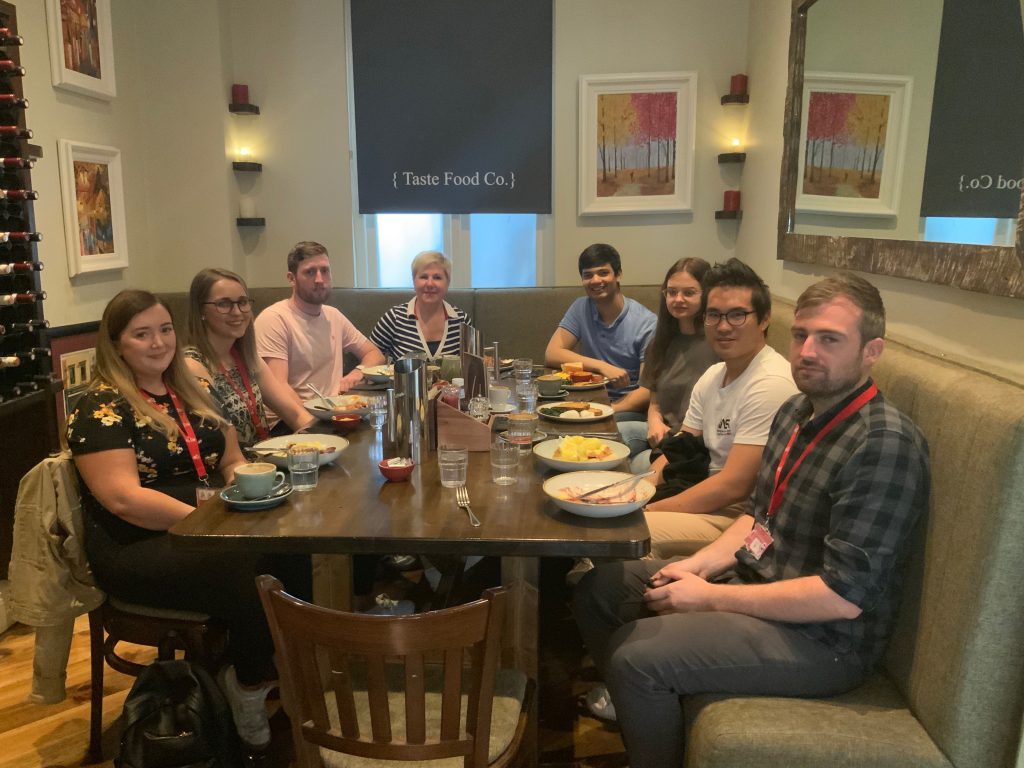
“I arrived to the lab on my very first day feeling a little bit nervous but excited at the same time. Firstly, my partner Sanat and I were given a safety introduction talk by Seamus, who seemed very strict in regard to the safety rules but also turned out to be very fun. We then met the team who we’d be working with: Dr Olga, John, Ciara, Catherine, Thomas… Everyone turned out to be very lovely and friendly, making you feel very comfortable in the workplace. I also enjoyed the fact that we’d go for breakfast all together every once in a while; this really makes you feel like a part of a big family.
My project was about melanoma and required some training that had to be completed before I could start my actual work. At first, everything seemed quite simple, however, when I started my actual research some things didn’t turn out as nicely as I expected. I mainly struggled with the microscope but Ciara was very patient with me and would give me a hand whenever I struggled.
Overall, it was a very pleasant experience that gave me a great perspective into research, working alongside my colleagues on something as important as cancer. I truly believe that anyone who gets a chance to participate in research should really go for it as it makes you look at science differently and can also be fun.” Evgeniia Mustafaeva
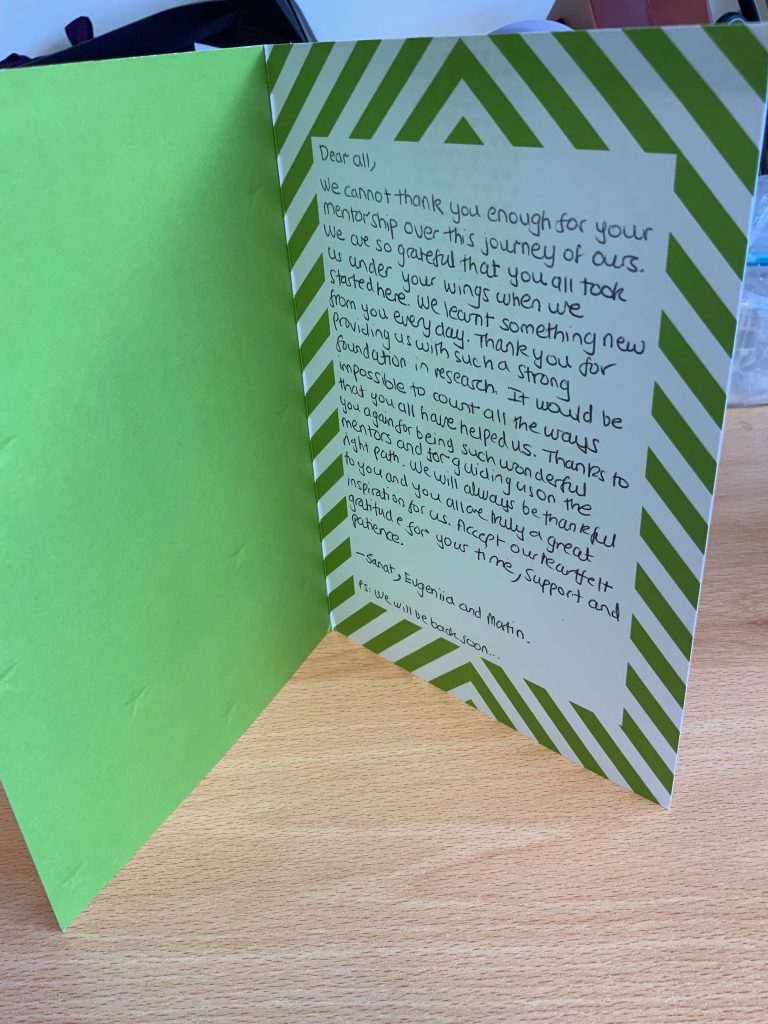
Exciting times ahead for my team – to study neuroblastoma – immune cells interaction. This 3 years project is funded by Neuroblastoma UK to support the interdisciplinary collaboration between experts in fields of neuroblastoma biology, immunology and tissue engineering from Royal College of Surgeons in Ireland, Trinity College Dublin and Queen Mary University London.
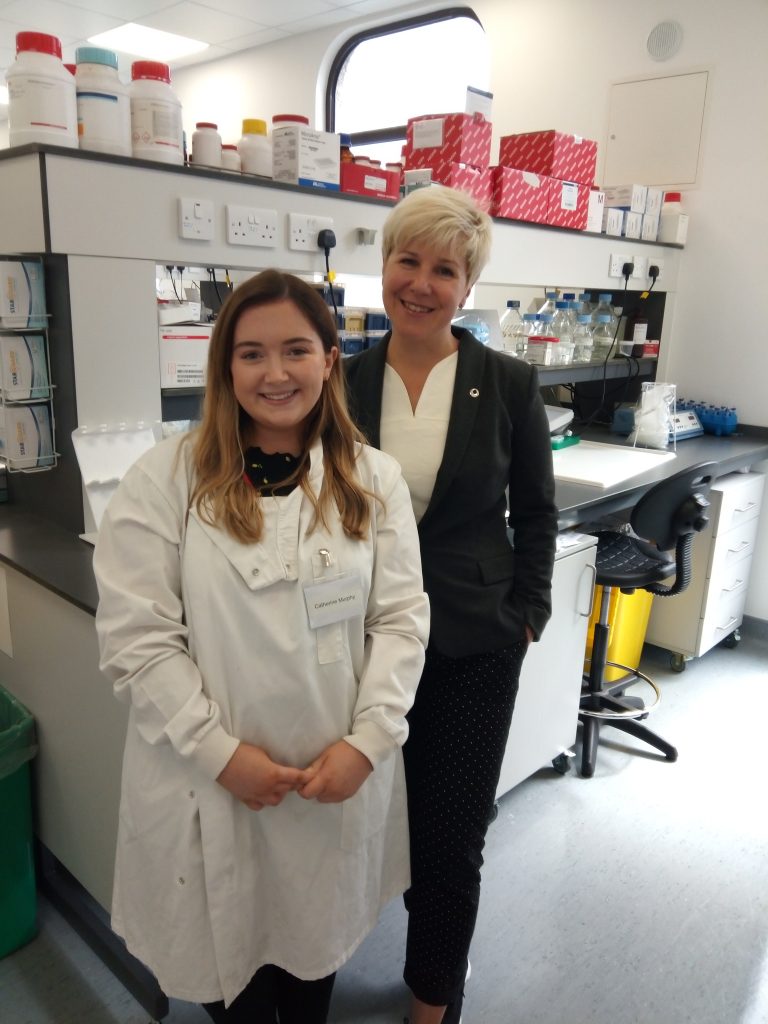
In this project, we will engineer a novel experimental model to study the biology and treatment of neuroblastoma. We will build upon our recently published model where we used collagen-based scaffolds and neuroblastoma cells to test their response to chemo drugs.
Catherine will grow different neuroblastoma cells together with immune cells using a 3D printing technology. She will travel to Queen Mary University London and learn how to do 3D tumour bioprinting. This technology allows the generation of reproducible scaffolds that replicate the architecture of tumour tissues as seen in patients. She will use RCSI/AMBER facilities to optimise this model here and to study how immune cells recognise cancer cells, attack and eventually kill them. This experimental model will help us to advance current immunotherapies and develop more effective treatments for neuroblastoma.